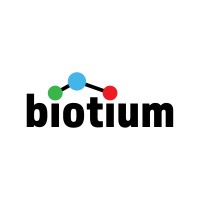CD43 / CF405M / rSPN/1094
Product Details
| Description | CD43 Recombinant Monoclonal Mouse Antibody (rSPN/1094) | |
|---|---|---|
| Conjugate | CF405M | |
| Clone | rSPN/1094 | |
| Target Species | Human | |
| Applications | FC, IF, IHC-P | |
| Supplier | Biotium | |
| Catalog # | Sign in to view product details, citations, and spectra | |
| Size | ||
| Price | ||
| Antigen | ||
| Host | ||
| Isotype |
About CD43
This gene encodes a highly sialylated glycoprotein that functions in antigen-specific activation of T cells, and is found on the surface of thymocytes, T lymphocytes, monocytes, granulocytes, and some B lymphocytes. It contains a mucin-like extracellular domain, a transmembrane region and a carboxy-terminal intracellular region. The extracellular domain has a high proportion of serine and threonine residues, allowing extensive O-glycosylation, and has one potential N-glycosylation site, while the carboxy-terminal region has potential phosphorylation sites that may mediate transduction of activation signals. Different glycoforms of this protein have been described. In stimulated immune cells, proteolytic cleavage of the extracellular domain occurs in some cell types, releasing a soluble extracellular fragment. Defects in expression of this gene are associated with Wiskott-Aldrich syndrome. [provided by RefSeq, Sep 2017]
This gene encodes a highly sialylated glycoprotein that functions in antigen-specific activation of T cells, and is found on the surface of thymocytes, T lymphocytes, monocytes, granulocytes, and some B lymphocytes. It contains a mucin-like extracellular domain, a transmembrane region and a carboxy-terminal intracellular region. The extracellular domain has a high proportion of serine and threonine residues, allowing extensive O-glycosylation, and has one potential N-glycosylation site, while the carboxy-terminal region has potential phosphorylation sites that may mediate transduction of activation signals. Different glycoforms of this protein have been described. In stimulated immune cells, proteolytic cleavage of the extracellular domain occurs in some cell types, releasing a soluble extracellular fragment. Defects in expression of this gene are associated with Wiskott-Aldrich syndrome. [provided by RefSeq, Sep 2017]
About CF405M
CF®405M from Biotium is a fluorophore with an excitation peak at 408 nm and an emission peak at 452 nm. It is spectrally similar to Pacific Blue, V450 and DY-415. It can be use in fluorescence microscopy and flow cytometry. Specifically, it has been validated for use in STED, Structured Illumination (SIM) and 2-Photon microscopy. In flow cytometry, superior alternatives are Brilliant™ Violet 480, Brilliant™ Violet 510 and StarBright Violet 515.
CF®405M from Biotium is a fluorophore with an excitation peak at 408 nm and an emission peak at 452 nm. It is spectrally similar to Pacific Blue, V450 and DY-415. It can be use in fluorescence microscopy and flow cytometry. Specifically, it has been validated for use in STED, Structured Illumination (SIM) and 2-Photon microscopy. In flow cytometry, superior alternatives are Brilliant™ Violet 480, Brilliant™ Violet 510 and StarBright Violet 515.
Experiment Design Tools
Panel Builders
Looking to design a Microscopy or Flow Cytometry experiment?
Validation References
Reviews & Ratings
| Reviews |
|---|
Looking for more options?
1722 CD43 antibodies from over 44 suppliers available with over 94 conjugates.





